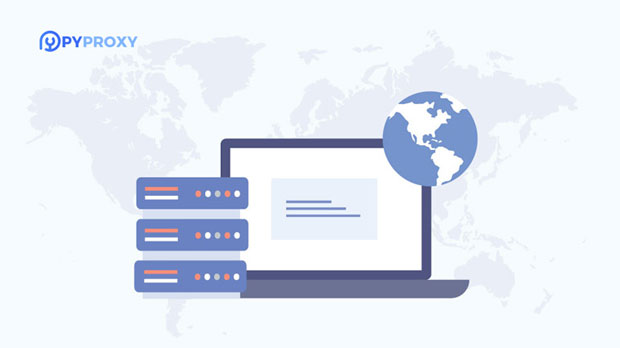In today's rapidly evolving digital landscape, businesses and individuals are increasingly relying on proxies to maintain privacy, improve security, and enhance their access to global content. A high-quality IP pool can significantly boost these efforts by offering a broad range of IP addresses that help bypass regional restrictions, avoid detection, and increase online anonymity. PYPROXY, a powerful proxy solution, leverages high-quality IP pools to deliver a host of benefits, enabling users to navigate the internet with greater efficiency, security, and reliability. In this article, we will explore the importance of high-quality IP pools in global access and how PyProxy can bring meaningful advantages to users in various sectors. 1. The Role of High-Quality IP Pools in Global AccessHigh-quality IP pools are an essential component of modern proxy services, providing users with diverse and reliable IP addresses that can be used to mask their identity and bypass geographic restrictions. These IP pools often include a mix of residential, datacenter, and mobile IPs, each offering distinct advantages depending on the use case. In the context of global access, high-quality IP pools are particularly valuable for those seeking to maintain online anonymity, bypass geo-blocked content, or conduct large-scale data scraping without being detected.For businesses and organizations, the ability to scale and manage access across multiple regions is crucial. By using high-quality IP pools, they can ensure that their operations remain smooth and efficient while avoiding issues such as rate-limiting, IP blocking, or CAPTCHA challenges. High-quality IPs also offer better anonymity and less likelihood of being flagged by websites, enabling users to interact with global platforms in a natural, seamless manner.2. PyProxy: What Makes It Stand Out?PyProxy is a leading proxy solution that excels in offering access to high-quality IP pools. The platform stands out for its ability to provide scalable and reliable proxies that cater to a range of needs. Whether it's for web scraping, SEO monitoring, online research, or bypassing geo-restrictions, PyProxy ensures that users have access to IP addresses that are diverse and capable of overcoming common online barriers.One of the key strengths of PyProxy is its robust infrastructure, which includes a wide range of proxy types, from residential to datacenter IPs. This ensures that users can access the most appropriate proxy for their particular use case, whether it requires anonymity, speed, or geographic location specificity. Furthermore, PyProxy guarantees high uptime, which is crucial for businesses that rely on continuous global access without interruptions.3. Enhanced Security and AnonymityOne of the primary advantages of using high-quality IP pools is the enhanced security and anonymity they provide. When accessing the internet, users are often exposed to risks such as hacking, tracking, and data theft. By utilizing a diverse IP pool, PyProxy allows users to mask their original IP address, making it more difficult for third parties to monitor their online activities. This is especially important for individuals and organizations concerned with privacy, such as journalists, activists, and businesses dealing with sensitive information.In addition to providing better anonymity, high-quality IP pools are more likely to remain undetected by anti-proxy systems used by websites. A mixture of residential and mobile IPs makes it harder for websites to distinguish between human users and automated bots, which can be essential for tasks such as web scraping, ad verification, and SEO monitoring. PyProxy's constant rotation of IPs ensures that even large-scale operations remain undetected and free from CAPTCHAs or blocks, making it an indispensable tool for global online access.4. Overcoming Geo-Restrictions and Unlocking Global ContentMany online services and content platforms impose geographical restrictions, limiting access based on the user's IP address. This is a significant challenge for individuals and businesses that wish to access global content, whether it be for entertainment, research, or competitive analysis. High-quality IP pools, such as those offered by PyProxy, allow users to bypass these geo-restrictions effectively.By rotating through a diverse range of IP addresses located in different countries and regions, PyProxy enables users to appear as if they are accessing the internet from virtually any part of the world. This capability is essential for those looking to access region-locked content, such as streaming services, online shopping platforms, and social media networks. Furthermore, by using residential IPs, PyProxy ensures that the user’s traffic is indistinguishable from regular, everyday internet traffic, reducing the likelihood of being blocked or flagged.5. Improved Web Scraping and Data CollectionWeb scraping and data collection are common tasks for businesses and individuals involved in market research, SEO, and competitive intelligence. However, these activities are often hindered by websites that limit access to certain data points or block IP addresses that exhibit suspicious behavior. High-quality IP pools, such as those provided by PyProxy, solve these challenges by offering a variety of IPs that can be rotated to avoid detection.By using PyProxy's diverse pool of IPs, users can distribute their scraping requests across different IPs, ensuring that their actions appear to be coming from multiple unique users. This greatly reduces the risk of being blocked or rate-limited by websites. Additionally, the ability to rotate IPs quickly allows for more efficient data collection, as users can bypass CAPTCHAs and IP bans that would otherwise hinder their progress. Whether gathering product information, conducting sentiment analysis, or monitoring competitors, PyProxy ensures that users can scrape data effectively without being disrupted.6. SEO and Online Marketing: Gaining Competitive InsightsFor digital marketers, SEO specialists, and online advertisers, the ability to monitor search engine results and analyze competitors is crucial. However, many search engines and websites limit the number of searches or impose restrictions on IP addresses that perform repetitive tasks. High-quality IP pools help overcome these obstacles by allowing users to make multiple requests without triggering anti-bot measures.PyProxy offers a powerful solution for SEO monitoring by enabling users to rotate IPs and simulate searches from different locations around the world. This allows businesses to track their keyword rankings and assess the effectiveness of their campaigns without being flagged for suspicious activity. Furthermore, with access to a wide range of IPs, users can gain a more accurate picture of how their website performs in different regions, helping them optimize their strategies for global reach.7. Scalability and Flexibility for Growing NeedsOne of the key reasons businesses and individuals turn to high-quality IP pools is their ability to scale with increasing demands. Whether it's a growing team of researchers, an expanding marketing campaign, or an increasing need for global access, PyProxy’s infrastructure is designed to accommodate these needs.PyProxy offers flexible plans that allow users to scale their use of proxies based on their specific requirements. With access to a large pool of IP addresses, users can easily increase or decrease the number of proxies they require, ensuring that they can handle large volumes of requests without compromising on speed or reliability. This scalability is particularly valuable for enterprises that need to adapt to changing market conditions or expand their reach into new regions.Conclusion: PyProxy's Edge in Global AccessIn summary, high-quality IP pools play a crucial role in improving global access, enabling users to bypass restrictions, enhance privacy, and access content from around the world. PyProxy offers a powerful solution by providing a wide range of reliable and diverse IP addresses, ensuring that users can perform tasks such as web scraping, SEO monitoring, and data collection with greater efficiency and security. Whether for businesses looking to expand their global footprint or individuals seeking to maintain their privacy online, PyProxy's high-quality IP pools offer significant advantages that can drive success in an increasingly connected world.
Nov 10, 2025


































































